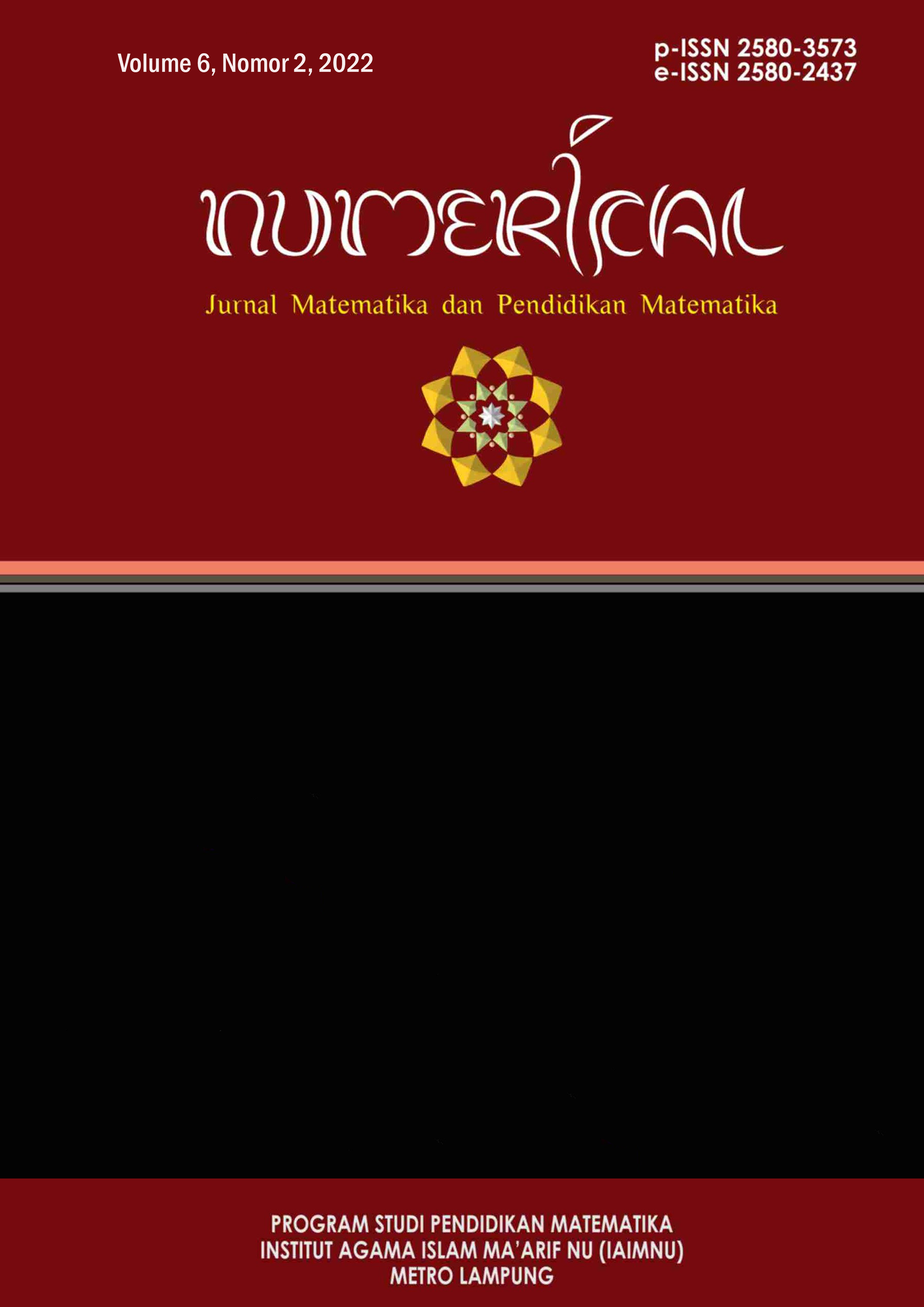Students Mathematic Communication in Solving Number Pattern Problems
Keywords:
Mathematical Communication; Number PatternsAbstract
The purpose of this research is to describe students' mathematical communication in solving number pattern problems. The method used in this research is descriptive qualitative. The research subjects were fifth grade students. Students were asked to solve number pattern problems. Student work results are classified into three categories which include good, medium, and low. In each category, 1 student was selected to be interviewed and analyzed in more depth regarding their mathematical communication. The results showed that (1) students in the good category were able to understand the context of the problem, express thoughts or solutions correctly and clearly, and use various ways to express thoughts or solutions; 2) students in the moderate category are able to understand the context of the problem, express thoughts or solutions that are not clear, and use various ways to express thoughts or solutions but are not precise; (3) students in the low category have not been able to understand the context of the problem, have not been able to express thoughts or solutions correctly and clearly, and have not been able to use various ways to express thoughts or solutions.
References
Fujishin, R. (2009). Creating communication. In International Journal of Fatigue (Vol. 1, Issue 1).
Richards, J. C., & Schmidt, R. (2010). Longman Dictionary of Language Teaching & Applied Linguistics. In Longman. Pearson Education Limited.
Naway, F. A. (2017). Communication and Educational Organization. Ideas Publishing.
Ardina, F. R., & Sa’dijah, C. (2016). Analysis of Inner Student Worksheets. Journal of Education: Theory, Research, and Development, 1 nomor 2(2015), 171–180.
Lanani, K. (2013). Learning to Communicate and Communication for Learning in Mathematics Learning. Scientific Journal of Mathematics Study Program STKIP Siliwangi Bandung, 2 (1), 13-25.
Kosko, K. W., & Wilkins, J. L. M. (2010). Mathematical communication and its relation to the frequency of manipulative use. International Electronic Journal of Mathematics Education, 5(2), 79–90.
Barbosa, A., & Vale, I. (2021). You ’ ve Got Mail ! – Written Communication and Feedback in Mathematics To cite this article : You ’ ve Got Mail ! – Written Communication and Feedback in Mathematics.
Walk, G., Congress, M., & Bansho. 2005. Communication in Mathematics Classrooms. Mathematics Education: Exploring the Culture of Learning, 8490, 117–119.
Sari, S. I., & Yuberta, G. R. 2022. Analysis of Mathematical Communication Ability in Terms of Student's Numerical Ability. Journal Management Center, 1(2),81-90.
Prayitno, S., Suwarsono, S., Siswono, TYE. (2013). Identification of Students' Mathematical Communication Ability Indicators in Solving Tiered Mathematics Problems at Each Level. Proceedings of the National Seminar on Mathematics and Mathematics Education, Department of Mathematics Education, FMIPA UNY on November 9, 2013 (pp: 73 – 81).
Sullivan, Z., Zevenbergen, R., & Mousley, J. (2003). The contexts of mathematics tasks and the context of the classroom: Are we including all Students? Mathematics Education Research Journal, 15(2), 107-121.
Ramellan, P., Musdi, E., & Armiati. (2012). Mathematical Communication Skills and Interactive Learning.
Oktavianingsih, S., & Warmi, A. (2021). Analysis of High School Students' Mathematical Communication Ability in Solving System Problems of Three Variable Linear Equations. Scholar's Journal: Journal of Mathematics Education, 8(1), 480–491.
Siniguian, T. M. (2017). Students Difficulty In Solving Mathematical Problems. International Journal of Advanced Research in Engineering and Applied Sciences, 6(2), 1–12.
Wilson, B. (2009). Mathematical Communication through Written and Oral Expression. University of Nebraska - Lincoln:DigitalCommons @ University of Nebraska - Lincoln, 23(3), 122–134.
Freeman, B., Higgins, K. N., & Horney, M. (2016). How Students Communicate Mathematical Ideas: An Examination of Multimodal Writing Using Digital Technologies. Contemporary Educational Technology, 7(4).
Utami, L. F., Pramudya, I., & Slamet, I. (2021). Students’ Mathematical Communication Ability in Solving Trigonometric Problems. IOP Conference Series: Earth and Environmental Science, 1796(1).
Rohid, N., Suryaman, & Rusmawati, R. D. (2019). Students’ Mathematical Communication Skills (MCS) in Solving Mathematics Problems: A Case in Indonesian Context. Anatolian Journal of Education, 4(2), 19–30.
Zurzaq, Z., Alim, A. Z. M., & Nuril , H. F. (2020) Student Problem Solving Ability on Islamic Integrated Geometry Material. Proceedings of the Conference on the Integration of Interconnection of Islam and Science. 2, 493-498.
Seran, H. Y., Fitriani., & Klau, Y. K. (2020). Analysis of Student Errors in Solving Story Problems System of Linear Equations of Two Variables Based on Newman's Procedure. MATH-EDU:Journal of Mathematics Education, 5(3), 112–121.
Aba, M. M., Anshar, S. P., & Ralmugiz, U. (2021). Students' Numerical Literacy in Solving Islamic-based Problems: Studies on Gender Perspectives. Advances in Social Science, Education and Humanities Research, 633.
Published
How to Cite
Issue
Section
License
Copyright (c) 2023 Latifatul Khasanah

This work is licensed under a Creative Commons Attribution-ShareAlike 4.0 International License.



